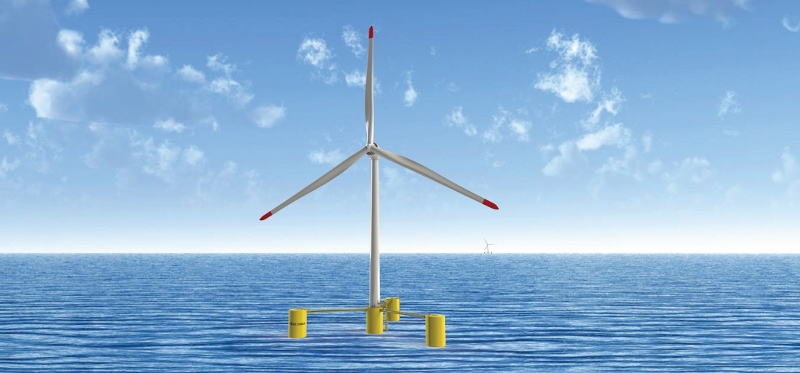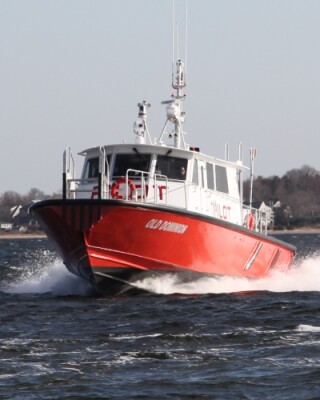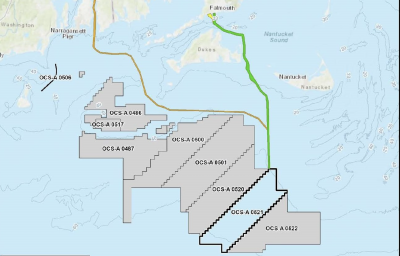An offshore wind energy pilot project was dealt a setback by Maine utility regulators, who voted to revisit a power price contract critical for financing the floating turbines.
Led by the University of Maine, the Maine Aqua Ventus project would be a pair of 6-megawatt turbines erected on a Volturn floating concrete hull, a technology developed at the university’s Advanced Structures and Composites Center.
Planned for a site south of Monhegan Island, the project aims to show how Volturn platforms could be used to develop an offshore wind energy industry in Maine, with floating platforms that can be moored in sea depths of 150’ or greater.
But on Tuesday members of the state Public Utilities Commission voted to reopen the price contract set four years ago. The three commissioners are appointees of Gov. Paul LePage, a skeptic of wind energy, and in January they began a new review of the offshore project’s implications for ratepayers.
“Since the term sheet was initially approved in February 2014, there have been significant changes in energy markets and technology, as well as changes to some of the specific provisions of the MAV (Maine Aqua Ventus) project and proposal,” according to a statement from the commission. “Before finally approving a twenty-year long contract with MAV, at an estimated cost to CMP’s ratepayers in excess of $200 million, the Commission noted that it is obligated to review the terms of the MAV contract in the context of these changed circumstances.”
“As one example of the changed circumstances, the Commissioners cited recent energy market price projections that are as much as 80% lower than those considered by the Commission when it approved the MAV term sheet.”
Maine has lower power costs than other New England states, according to the U.S. Energy Information Administration, and has not joined Massachusetts and Rhode Island in pursuing wind energy development on federal leases offshore.
Wind energy advocates said the above-market premium built into the proposed rate to be paid for electricity from the MAV project – an estimated 73 cents per month for the average residential customer – would be well worth it to help establish a homegrown industrial base in Maine.
While state regulators raised a number of legal and technical questions about the project, the cost to consumers is the main issue. Similar disputes among state regulators blocked the Fishermen’s Energy wind project proposed for state waters off Atlantic City, N.J, during the administration of former Gov. Chris Christie.
His successor, Gov. Phil Murphy, is a wind power advocate, and both the 30 MW Fishermen’s Energy project and much larger plans for federal leases now have a much more favorable political climate.





